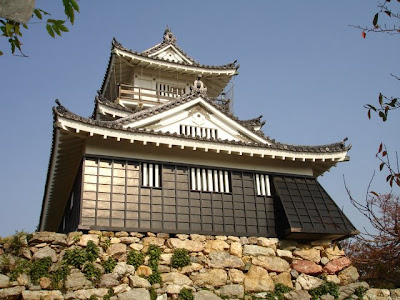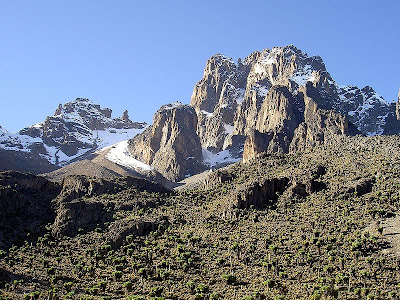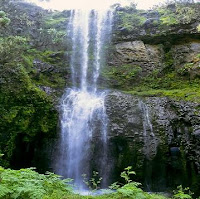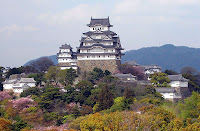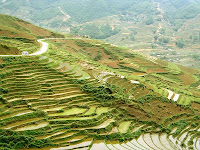Zygmunts Column built in 1644 is one of Warsaws most famous landmarks and one of the oldest secular monuments in northern Europe. It is also called as Sigismunds Column. The column and statue commemorate King Zygmunt III Waza, who in 1596 had moved Poland capital from Krakow to Warsaw.
 Built between 1643 and 1644, the column was constructed on the orders of Zygmunts son and successor, King Wladyslaw IV Vasa. It was designed by the Italian-born architect Constantino Tencalla and the sculptor Clemente Molli, and cast by Daniel Tym. The Zygmunts Column was modelled on the Italian columns in front of Basilica di Santa Maria Maggiore, and the Column of Phocas in Rome.
Built between 1643 and 1644, the column was constructed on the orders of Zygmunts son and successor, King Wladyslaw IV Vasa. It was designed by the Italian-born architect Constantino Tencalla and the sculptor Clemente Molli, and cast by Daniel Tym. The Zygmunts Column was modelled on the Italian columns in front of Basilica di Santa Maria Maggiore, and the Column of Phocas in Rome.
 Built between 1643 and 1644, the column was constructed on the orders of Zygmunts son and successor, King Wladyslaw IV Vasa. It was designed by the Italian-born architect Constantino Tencalla and the sculptor Clemente Molli, and cast by Daniel Tym. The Zygmunts Column was modelled on the Italian columns in front of Basilica di Santa Maria Maggiore, and the Column of Phocas in Rome.
Built between 1643 and 1644, the column was constructed on the orders of Zygmunts son and successor, King Wladyslaw IV Vasa. It was designed by the Italian-born architect Constantino Tencalla and the sculptor Clemente Molli, and cast by Daniel Tym. The Zygmunts Column was modelled on the Italian columns in front of Basilica di Santa Maria Maggiore, and the Column of Phocas in Rome.In 1681 the monument was surrounded with a wooden fence, which was later replaced with a permanent iron fence. The marble column itself was renovated many times in the next few centuries. In 1854 the monument was surrounded with a fountain featuring marble tritons sculpted by the German, August Kiss.
In 1863 the column was renovated somewhat again, but still needed work, and between 1885 and 1887 it was replaced with a new column of granite. Between 1927 and 1930, the monument was again renovated, and was restored to its original appearance when the fountain and the fence around it were removed.
On September 1, 1944, during the Warsaw Uprising, the monument was demolished by the Germans, and its bronze statue was badly damaged. After the war the statue was repaired, and in 1949 it was set up on a new column, made of granite form the Strzegom mine, a couple of meters from the original site. The original broken pieces of the column can still be seen lying next to the Royal Castle.

 On the Corinthian column 8.5 m high, a sculpture of the King, 2.75-meter high, in archaistic armour is placed. Sigismund Column now stands at 22 meters and is adorned by four eagles. The king is dressed in armor and carries a cross in one hand and wields a sword in the other.
On the Corinthian column 8.5 m high, a sculpture of the King, 2.75-meter high, in archaistic armour is placed. Sigismund Column now stands at 22 meters and is adorned by four eagles. The king is dressed in armor and carries a cross in one hand and wields a sword in the other.
On September 1, 1944, during the Warsaw Uprising, the monument was demolished by the Germans, and its bronze statue was badly damaged. After the war the statue was repaired, and in 1949 it was set up on a new column, made of granite form the Strzegom mine, a couple of meters from the original site. The original broken pieces of the column can still be seen lying next to the Royal Castle.

 On the Corinthian column 8.5 m high, a sculpture of the King, 2.75-meter high, in archaistic armour is placed. Sigismund Column now stands at 22 meters and is adorned by four eagles. The king is dressed in armor and carries a cross in one hand and wields a sword in the other.
On the Corinthian column 8.5 m high, a sculpture of the King, 2.75-meter high, in archaistic armour is placed. Sigismund Column now stands at 22 meters and is adorned by four eagles. The king is dressed in armor and carries a cross in one hand and wields a sword in the other.













